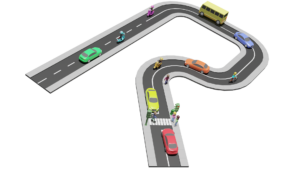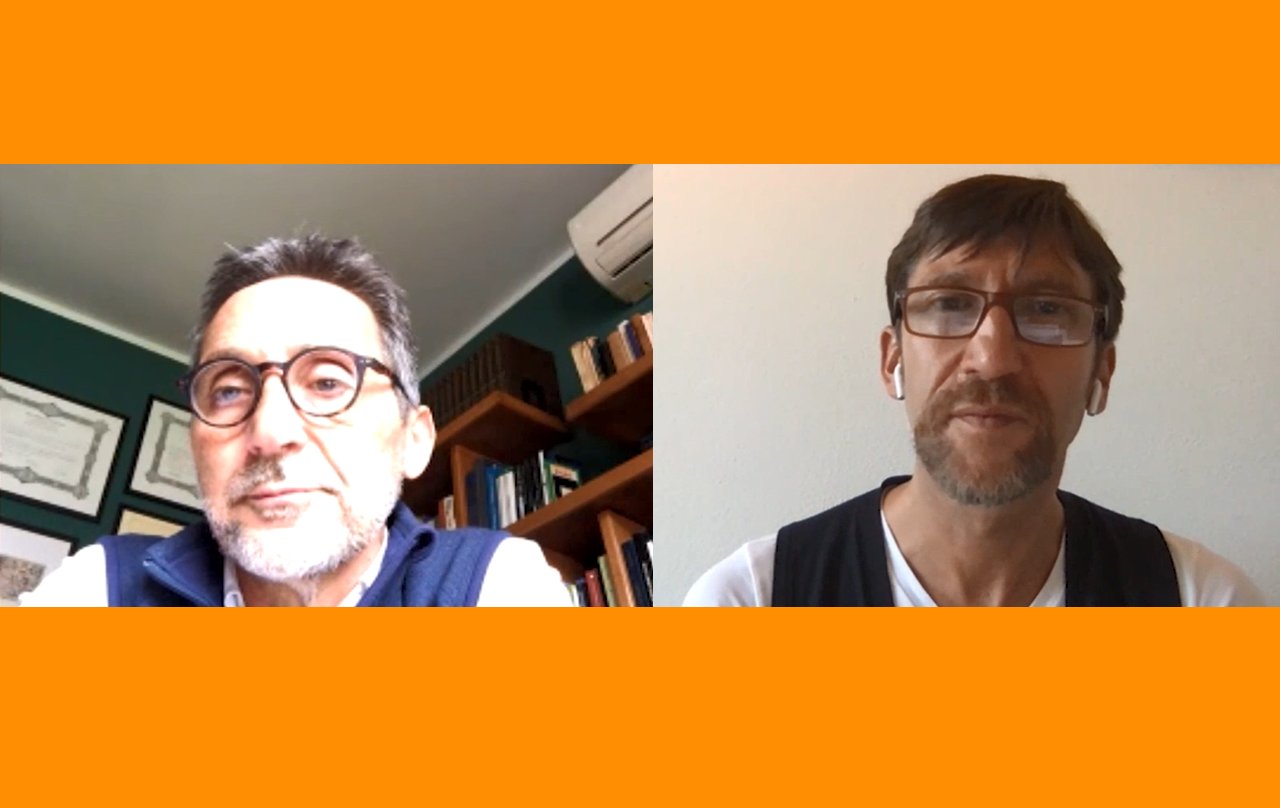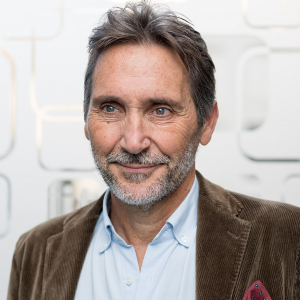
Project RODEO: a webinar for safe and accessible roads and the right to mobility
A free webinar (in Italian) to talk about how to make roads and driving accessible to people with disabilities, but also about the procedures to

For our Focus on Emergency Robots we asked Prof. Antonio Bicchi, President of the Institute of Robotics and Intelligent Machines (I-RIM) and Italian Institute of Technology & University of Pisa, to talk about the perspectives of robotics in Italy in the field of measures and activities against COVID-19.
Robin Williamson – Professor Bicchi, many thanks for finding the time to share some of your ideas with us today and giving us interview. For those of us, who are less involved in robotics, could you give us a presentation of your various activities and also those of the by I-RIM and especially the Tech for Care projects?
Antonio Bicchi.
In Italy, the robotics and of the Intelligent Machine community is very lively. There are many projects going on and important industrial activity. if you look at robotics from a general point of view, not only to the humanoids but to the whole field where you have systems with perceptions and the ability to act that are ling to intelligence, definitely there are a lot of activities. Italy is actually one of the leading countries in manufacturing and in the integration of intelligent machines into manufacturing.
And Italy is also strong in robotics, there is a lot of work there, on research labs and also in industry. And again, there is plenty on industries that might not call their products “robots” themselves, but in fact, they are intelligent machines that autonomously decide, based on sensing, wat action to do. Overall, it’s a very lively field which is somehow underrepresented in the media or in the understanding of people because there was not a single point of contact with the community.
That is the reason why, roughly one year ago, we started to build an institute where all people doing robotics in Italy, under different brands, gather together, and this is the Institute of Robotics and Intelligent Machines (I-RIM).
In the I-RIM we have all the researchers coming from different backgrounds: Engineering, Computer Science, but also from Physics, Psychology, Ethics, all those who are interested in all different aspects that are in Robotics, together with industrialists and practitioners.
This body of people gathered together in the first conference that we organized in October 2019 in Rome, organized together with Maker Faire and it was a big success. We had a large number of participants (around 500) in the conference, very distinguished speakers, and a well-balanced Program connected to the Faire. We organized also a very rich exhibition of robots that was very well attended.
Then COVID came and everything following was suspended.
But these days we found a new goal. In the last couple of months, the Institute has been focussing a lot on how could we respond to the emergency, in many different ways, with short, medium, and long-term perspectives. One of the concerns is that when the needs are there, that we are able to provide solutions. These might not be the ultimate solutions, but technology is there and it’d better be useful.
From this point of view, we realized that we needed a structure to merge research with the possibilities to implement now, not in two years from now, and not in one lab, or in few labs, but in all the hospitals, in all the factories, in all those places that solutions for sanitization were needed.
Then we realized that was important that those who do research labs meet with industry and especially with those who are passionate about technology and, most importantly, with those who express these needs.
On these bases we built the initiative you have mentioned, Tech for Care, an initiative gathering people from the field – whose needs we have investigated through questionnaires -, people from the Maker area, who able to produce, apply and act technology. Tech for Care aims to put together needs and solutions.
Robin Williamson – Has Tech for Care been instrumental in the fight against Covid-19?
Antonio Bicchi.
Covid-19 is a very complex issue, and what is really expected now is the vaccine. We have a humbler role in the response, but we think that robots can be of help, especially in relieving a little bit the stress of hospital staff and personnel, this is number 1 task, relieving doctors and nurses from the fatigue. Our technology allows activity even if people are not in close contact – for instance using sensors to alert people they are getting to close each other. Another technology we could design is that – located on a wristwatch, per example – alerting people not touching their face, an act that could be dangerous these days. Little steps that are useful, and that are distant from the fundamental research we do also in our labs.
Robotics is becoming a hot field, now, in this situation in which in many situations humans need to stay distant, using technology as a remote assistant, and supporting industry production.
What we could do today is basically limited by the availability of technology on the market. We do have technological solutions for many problems, but these devices are not on the shelves, we cannot buy them. To answer today need you should be ready to offer the technology on the market and this is the aim of Tech for Care, to be a repository for ready-to-use solutions. Today we could offer open source technologies, but for the medium and long term, we have to do better. For instance, sanitization. For this, we could provide mobile robots with UV lamps that go around the area sanitizing it. But in many cases object shapes present shadow areas where UV cannot go – handles, for example – and in these cases, one has to manually sanitize these parts. To do it by a robot, it means that the robot has the possibility to reach those shadow parts. In such cases, we do need robotics arms. This means that European robotics will have to develop even more robotics arms, working also in a cooperative way. Cooperative robotics is dominated by the European industry, but we will have to develop these arms to – in a sense – live with us, in our homes, or at least in our working environment.
Robin Williamson- Thank you! This brings me to the next question. Thee journalist and influencer Riccardo Luna wrote a rather provocative article in Il Sole24ore, “Where did the Robots end up? (Ma che fino hanno fatto I robot?). In fact, it appears that industrial robots cannot simply move to our daily life to support our fight on COVID.
Antonio Bicchi. I read that paper, and I can tell you what did happen in our community: many felt the sting: Where are our robots now? But for me, and for many others like me, I was thinking that question already. The community and our Institute already had asked the same question, to ourselves: what can we do now?
That question is not naïf and does not deserve a naïf answer. The answer is that technology we have in our labs today, and that we see on the media, is something that is very advanced and sophisticated. These are humanoids, the very clever robot we want to have in the near future. But robotics technology we need today shall be on the shelves. And actually, we have been doing very good robotics technology in the last twenty years, that could become a product now. Many are there already: lawnmowers, and vacuum cleaner.
Robin Williams: The Roomba!
Antonio Bicchi.
Yes, the Roomba has a lot of intelligence. It happened that I was in the Roomba lab when it was conceived, and then it was a research project. Now Roomba is sold to families. But what is happening? But maybe Riccardo Luna is not counting Roomba as a robot, why? Because Roomba is there, on the shelves and what happens is at the moment machines are with us, they lose the aplomb of being robots. But, in fact, those products, came out from our labs twenty, ten years ago, to become products. We modified our research prototypes, software changed, to be used also by non-experts.
To reply to Luna: robots are here, maybe you don’t see them because you don’t think to them when they are available.
Robin Williamson. It’s clear, technology is taken for granted when is part of our everyday life, they are no longer visible, and are seen as normal devices. But in reality, they are robots.
Professor Bicchi: And this works for all the technology.
Robin Williamson. Very true! Now, coming back to the social situation created by COVID-19. The concern is growing over the use of Artificial Intelligence for monitoring our state of health, the mobility, and other parameters for citizens. Do you share this concern?
Professor Bicchi. Yes, I do! If you read what happened in China, for example, how couldn’t you be concerned? It seems that the confinement and control we are living these days is pushing in a direction we don’t like. I share this concern and I am worried, I wouldn’t like to be controlled by a Big Brother creeping into our lives. I think that those concerns should be tackled with courage, we cannot be defensive because with a defensive approach we will be left behind. We have to ride the waves and be bold enough in imposing our values, our way our technology shall be applied.
William Robinson. Professor Bicchi, many thanks. Thank you very much for your time and so rich discourse on robotics today.

Antonio Bicchi is a Senior Scientist at the Italian Institute of Technology in Genoa and the Chair of Robotics at the University of Pisa. He graduated from the University of Bologna in 1988 and was a postdoc scholar at M.I.T. Artificial Intelligence Lab` in 1988–1990. He teaches Control Systems and Robotics in the Department of Information Engineering (DII) of the University of Pisa. He leads the SoftRobotics Lab for Human Cooperation and Rehabilitation at IIT in Genoa. He leads since 1990 the Robotics Group at the Research Center “E. Piaggio” of the University of Pisa. Since 2013 he is an Adjunct Professor at the School of Biological and Health Systems Engineering of Arizona State University. President of the Institute of Robotics and Intelligent Machines (I-RIM) (https://i-rim.it/en/)

A free webinar (in Italian) to talk about how to make roads and driving accessible to people with disabilities, but also about the procedures to

Are you ready to dive into the oceans with your underwater robot? The FIRST® LEGO® Italy 2024-25 will open up the ocean depths to you

The new Erasmus plus project in which School of Robotics is a Partner is a KA2, Cooperation Partnership and is called EITIC-EU: Promoting girls in

GET READY FOR THE BEACH.. WITH SCIENCE, OF COURSE! This summer with Guardians of the Coast you have the unique opportunity to learn how to
Write here your email address. We will send you the latest news about Scuola di Robotica without exaggerating! Promised! You can delete your subscription whenever you want clicking on link in the email.

© Scuola di Robotica | All Rights Reserved | Powered by Scuola di Robotica | info@scuoladirobotica.it | +39.348.0961616 +39.010.8176146 | Scuola di robotica® is a registered trademark